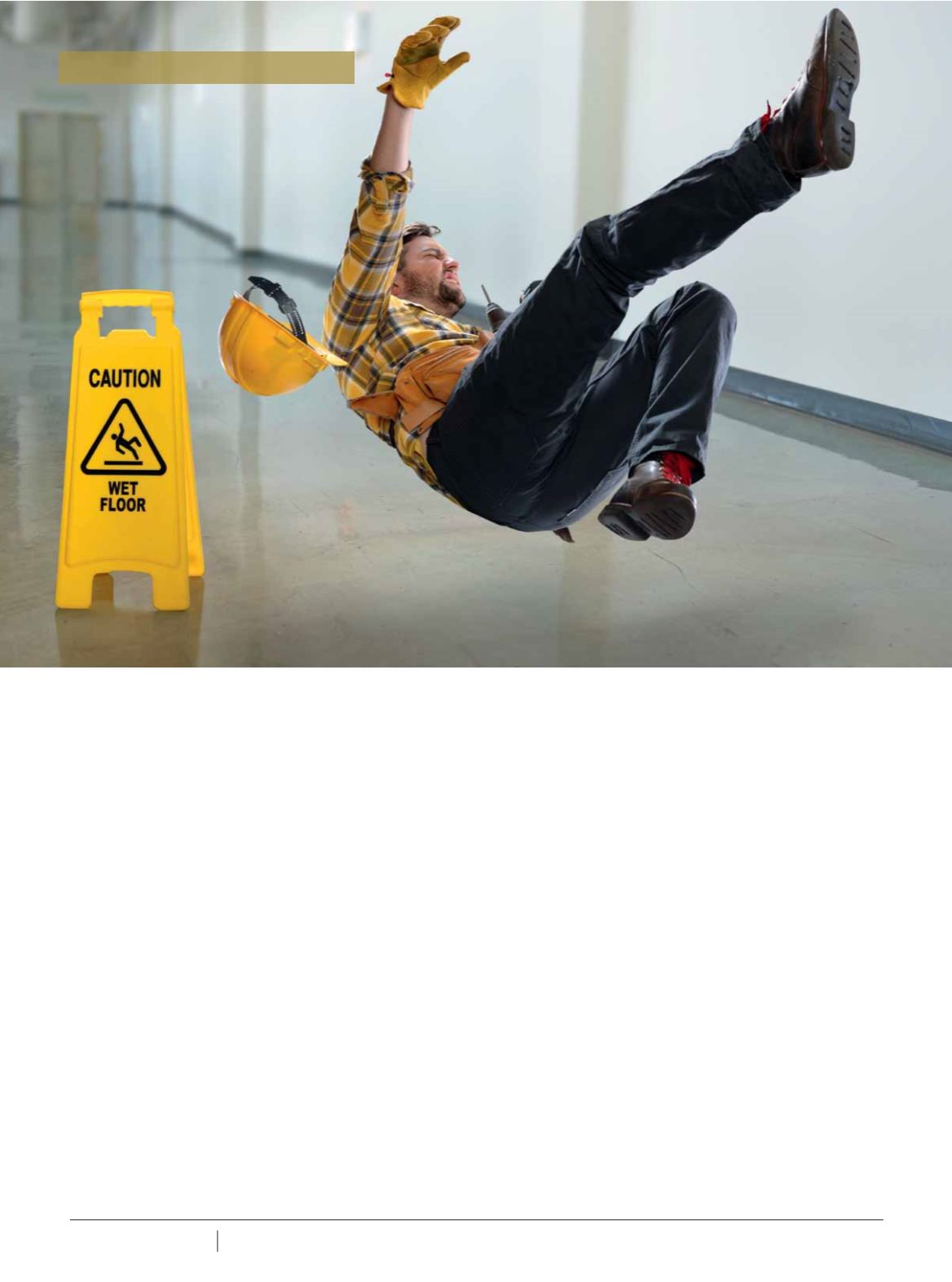

1 4
BUILDING CONNECTION Spring 2019
GETTING SERIOUS ABOUT SLIP SAFETY
Rebecca Findlay-Debeck
begins her series on slip safety articles by discussing why it should be
front of mind when on site. Upcoming articles include applying slip safety standards to your site;
WHVWLQJ PHWKRGV XQGHUVWDQGLQJ FRPSOLDQFH FHUWL¿FDWHV VSRWOLJKW RQ OLWLJDWLRQ DQG FXUUHQW LVVXHV
SLIP ASSESSMENT -
REBECCA FINDLAY-DEBECK
L
ike Guitar Hero, pet rocks and
hipster beards, it seems like the
Building Code of Australia (BCA)
adopts a new fad every few years. For
many of us, the increasing emphasis on
slip safety is just the latest ‘buzz topic’
in a long list of building compliance
requirements.
In 2014, changes to the National
Construction Code (NCC)/state-based
BCAs introduced mandatory slip safety
testing as part of getting an Occupation
Certificate (OC) for stairs, ramps and
landings. Often these areas are just
the starting point for compliance
testing, with council, certifier or client
requirements extending to building
entry areas, swimming pool surrounds,
bathrooms, kitchens and other ‘high
risk’ slip and fall locations. This has left
many of us wondering why slip safety is
suddenly so important...
For the past decade, slip and falls
represent ~20-25% of all serious
Australian workplace injuries, with more
than 380 related worker deaths.
Serious injuries are defined as those
requiring hospitalisation or medical
treatment; form part of an accepted
workers compensation claim; and result
in an absence from work of seven or
more days. In 2017, this 23% injury rate
translated to more than 25,000 people
being seriously hurt at work as a result
of slip and falls, largely occurring on
level surfaces.
1
Similar statistics are found in the
United Kingdom (UK), Europe and
the United States (US). In the US, for
example, around 80 million slip and falls
(and 9.9 million falls-related injuries)
occur annually, evenly distributed
across adults from 18 years to 65 plus
years. Insurance industry estimates
are that the overall economic cost
of this in the US is $111 billion per
annum, with 25,924 deaths; 693,500
hospitalisations and 5,022,536
emergency room admissions each year.
2
We know from injury incidence rates
that slip and falls present a serious
safety risk, but how does this connect
to the BCA and building works?
There are a range of environmental,
















